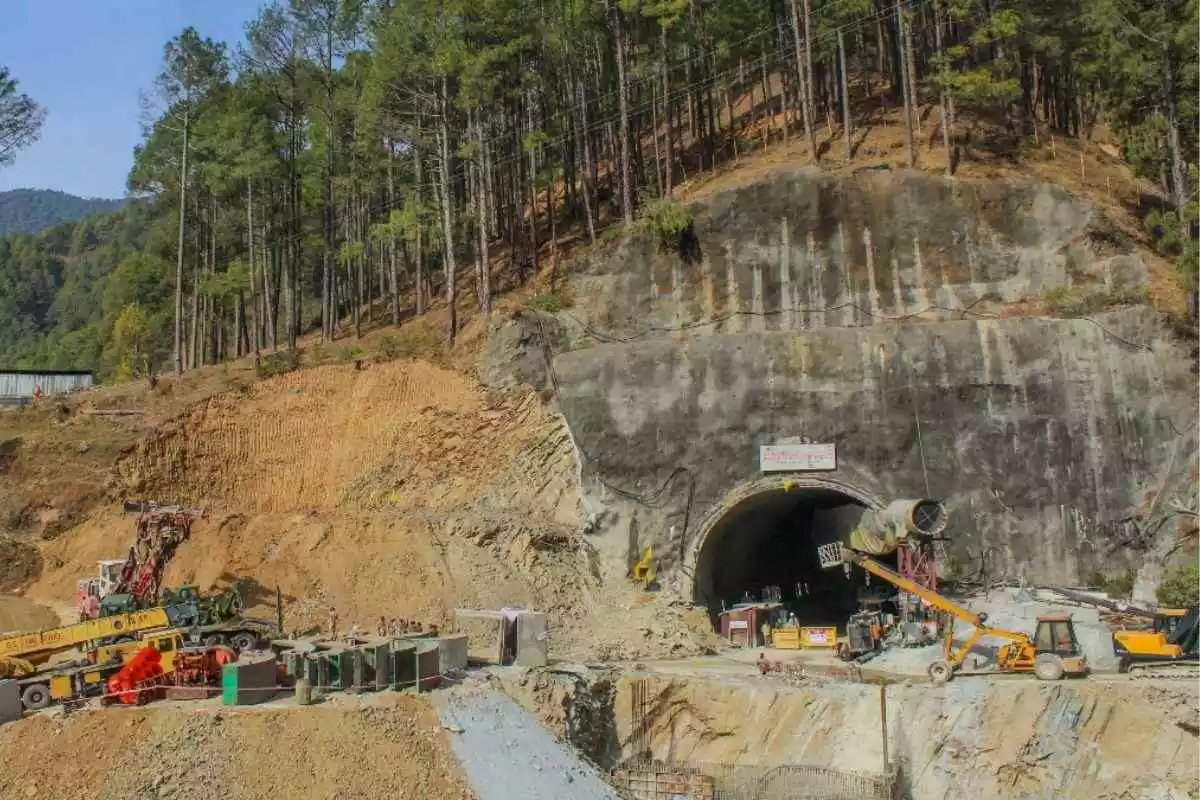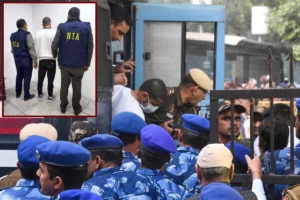
Uttarkashi tunnel
Uttarkashi tunnel collapse: According to people with knowledge of the situation, manual drilling and horizontal excavation using the rat-hole mining technique began on Monday at the Silkyara tunnel in Uttarkashi with the goal of freeing the 41 workers who had been imprisoned there for 16 days. Six rat-hole mining specialists have also been assigned to the rescue effort. This happened after sections of an auger equipment produced in the United States that was capable of drilling up to 46.8 meters into the debris became lodged in the debris on Friday. This forced officials to turn their attention to other options, like vertical drilling and the use of rat-hole mining techniques.
Rat hole mining
Six rat-hole miners from Madhya Pradesh will manually drill through the final 10–12 meters of rubble in the collapsed section of the tunnel, according to officials participating in the rescue effort. On Monday, they started drilling from within the 800- and 900-mm-diameter pipes that were brought into the tunnel to evacuate the workers.
“Three of us will go inside the tunnel, one will do the drilling the other will collect muck and the third one will push the muck through the trolley,” Rakesh Rajput, one of the rat-hole miners from Madhya Pradesh, said. “The 41 men are also labourers and we all want to bring them out.”
In Meghalaya, rat-hole mining is a traditional technique used to extract coal resources via small, horizontal passageways. The phrase “rat hole” describes the little, naturally formed holes that are usually only deep enough for one person to descend and retrieve coal. Its likeness to rats crawling through small holes is where the term originates.
Here’s the entire process of rescue
Parsadi Lodhi, another rat-hole miner and resident of Jhansi who has joined the rescue operation, said, “I have been doing this work for last 10-12 years in Delhi and Ahmedabad. But it will be first time when we will use our skills to rescue men trapped in a tunnel.”
Elaborating the rescue process using this technique, Lodhi said, “We would enter the rescue pipes and use the hand-held tools to remove debris… There is no reason for us to be scared to do this job. These are 800-mm pipes, we have entered in narrower 600-mm holes.”
Stating that there are about 10 to 12 metres of debris remaining, he added, “If its just soil, it will take around 24 hours…If there are rocks, then it could take them 32 hours or even more.”
According to Vipin Rajput, a resident of Jhansi, he has been working in this field for the past two to three years. “We are quite confident about our skills that we can easily remove 10-12 metres of debris,” he added.
Uttarkashi tunnel collapse
As part of the Char Dham all-weather road project, a 4.5-kilometer tunnel under construction between Silkyara and Barkot on the Brahmakhal-Yamunotri National Highway caved in at 5:30 am on November 12 as a result of a landslide, trapping 41 workers from throughout the nation. From the Silkyara side, the collapsed section is located 270 meters from the tunnel’s mouth.
The managing director of the company building the tunnel, NHIDCL, Mahmood Ahmad, stated that the miners are prepared to work in any circumstance. “We are hopeful they would be able to drill manually and reach the workers,” he said.
But inclement weather could make the rescue effort more difficult. The operation would be difficult since thunderstorms, hail, and rain are expected in the area, according to the India Meteorological Department (IMD). These weather phenomena could cause the minimum temperature to drop below 9 degrees Celsius.
To read more such news, download Bharat Express news apps


















